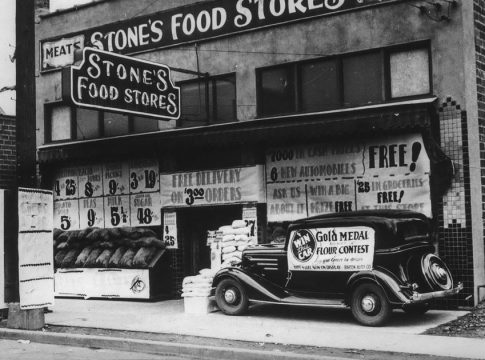Unearthing Spokane’s Culinary Roots: The Legacy of Stone’s Food Stores
When we think of grocery shopping, images of sprawling supermarkets and endless aisles might come to mind. But let’s set the scene in the vibrant 1930s Spokane, where a local gem, Stone’s Food Stores, was born from the ambitious dream of a visionary named Roy L. Stone. This isn’t just a tale about groceries; it’s a tasty chapter in the history of American retailing that leaves us hungry for more!
The Beginnings: Cash and Convenience
Picture the bustling streets of American Falls, Idaho, in 1915. Enter Skaggs Cash Store, where the philosophy was all about keeping prices low and customer satisfaction high. Founded by the innovative duo Samuel and Nancy Skaggs, this retail pioneer accepted only cash but became the kitchen sink of grocery shopping. A blend of functionality and frugality, Skaggs laid the groundwork for many other grocery adventures to come.
Fast forward to 1920. A young Roy L. Stone, fresh from his Idaho roots, took his first steps in Oakland, California, as an assistant manager at a Skaggs drugstore. Talk about seasoning in the business! Over the next eight years, he transformed 32 small stores into a thriving grocery chain, eventually catching the attention of MacMarr stores in 1928.
The Growth: Merging with Giants
By 1931, Stone’s journey took another turn when MacMarr merged with Safeway, one of the largest grocery chains in the Northwest. With Roy Stone at the helm as vice president, he was stirring up a storm in the grocery scene. Imagine a world where the merger of 1,400 stores rolled under a single banner, thanks to investment from Charles Merrill of Merrill Lynch. This was grocery shopping on an entirely new level!
Homeward Bound: Stone’s Legacy
But the lure of his hometown called! Stone returned to Spokane and began constructing Stone’s Food Stores, with the very first outlet nestled at 319 S. Cedar St. His stores weren’t your run-of-the-mill shopping spots. They boasted modern features like self-service options and top-notch refrigeration—keeping your cheeses squeaky fresh and meats chilled to perfection, though they remained cozy compared to the mega supermarkets we know today.
A Bittersweet Twist
A noteworthy player from the region, Lisle Sigman, a teen grocery wizard from Colfax, started his own journey in 1913. By 1939, he launched Sigman Foods in Yakima, carving out a niche of his own. Fast-forward to 1946, and he’d acquired Stone’s chain, merging flavors and expertise into something entirely scrumptious.
After some years spent away from the hustle, Stone made a comeback in 1951 with the Low Cost Food Market, adding four more stores to his roster before passing the culinary torch in 1959, when health concerns beckoned. Though Stone passed away in 1973, his influence still echoes through the aisles of grocery stores today.
Why This Matters
Stone’s Food Stores were not just places to pick up ingredients; they were part of a burgeoning movement that redefined how Americans interacted with food. From self-service to reliable refrigeration, these innovations laid the groundwork for today’s grocery experiences.
So next time you’re strolling through a grocery store, take a moment to appreciate the rich tapestry of innovation, creativity, and community that paved the way. After all, every time we pick up a fresh cucumber or a slice of artisanal cheese, we’re partaking in a delectable slice of history. Happy shopping and cooking!

Covers wellness, nutrition, mental health, and daily life tips.
Bio: Talia brings a background in health journalism and holistic living to help readers live better, one tip at a time.

